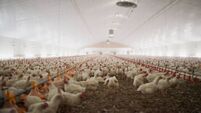Size of US maize crop dictates EU grain price
Dr Gerald Mason, of Home Grown Cereals Authority (HGCA), suggested that with low world wheat and feed grain stocks, the size of this year’s crop will have a large bearing on grain prices. This in turn will be dependent on the weather in the major grain producing areas of the US, Canada, Australia and the EU.
He said the size of the US maize crop, the single biggest grain crop in the world, covering 48 times the combined Irish wheat and barley area, will also be a critical determinant of feed grain prices. “If poor weather reduces the expected world grain output of 597 million tonnes, then grain prices could rise above their current levels. Irish farmers should see grain prices rise by up to €10 per tonne,” said Dr Mason.
However, he cautioned that currency exchange rates and political issues could also have a large impact on world grain prices and these could be unpredictable.
With current prices for certain cereal grains relatively high, particularly quality wheat and malting barley, world output of these cereals in 2003 is expected to increase.
Dr Mason said that to date world plantings of wheat are lower than expected, which could indicate that output targets will not be met.
This would also have a positive effect on grain prices. However, overall plantings will depend on the weather during the spring.
He said there was a more uncertain outlook for feed wheat and barley. The world market will be influenced by the US maize output, but output of feed wheat and barley in the main producing regions will also have a major impact on price.
Dr Mason said that with the current low level of cereal stocks, increased price volatility in response to weather is certain.
The Teagasc conference followed a bad production year in the tillage sector, where crop yields and quality were well below average.
Dr Jimmy Burke, head of the Teagasc Tillage Research Centre at Oak Park, Carlow, said this was compounded by very severe disease levels in most cereal crops, which farmers found difficult to control.
Prolonged wet weather meant that the number of satisfactory spraying days were greatly reduced and accurate spray timing seriously affected, which reduced overall efficacy.










